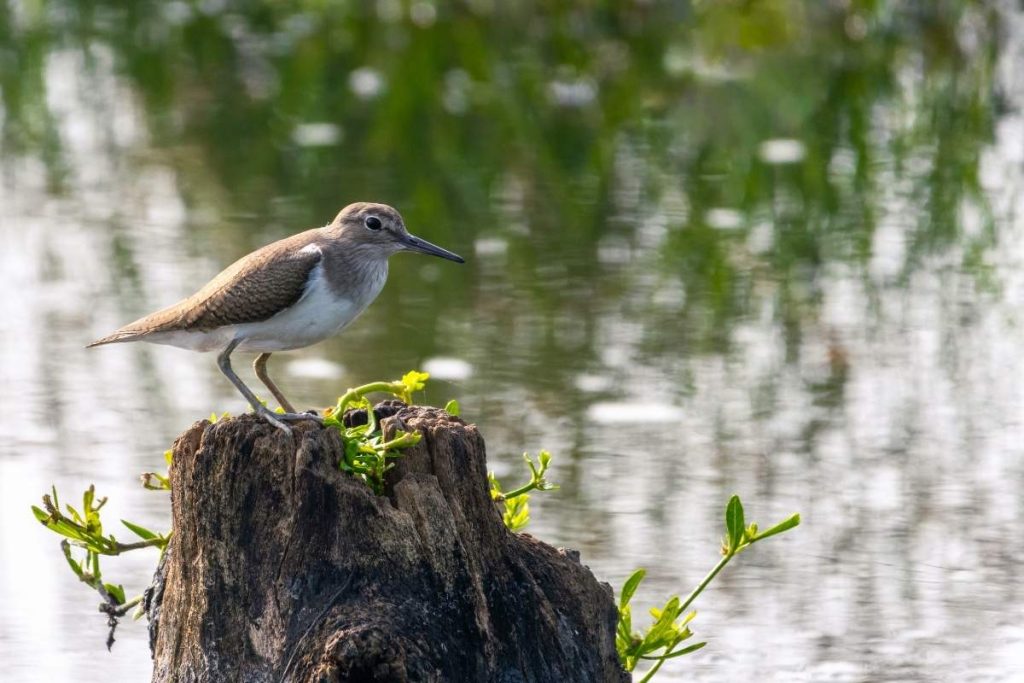Sandpipers are small shorebirds with long legs and slender bills, feeding on invertebrates in mud or sand. They nest in ground scrapes, laying 3-4 eggs, with both parents often sharing incubation. Some species have unique mating systems, and chicks can forage soon after hatching.
The Scolopacidae family, which includes snipes, woodcocks, curlews, and sandpipers, primarily feeds on small invertebrates found in dirt or mud. Species with varying bill lengths can graze in the same habitat, particularly along the coast, without competing for food.

Perched view The sandpiper stands on a perch, observing.
Sandpipers have small wings and lengthy bodies and legs. Although the majority of species have slender bills, they vary greatly in length and structure. Their length ranges from 12 to 66 cm (4.7 to 26.0 in), making them small to medium-sized birds.

Field observer The sandpiper stands still, observing the field.
As the birds search for food, their delicate beaks sense the sand and mud. Their plumage is typically dull, with camouflage patterns. Most species defend territory with aerial displays and nest in open spaces. They lay three or four eggs and have precocial young. While many form monogamous pairs, some fight for mates, and others show polyandry or single-parent care.

Focused stare The sandpipers stand still, eyes locked together.
Sandpipers typically lay three or four eggs in a simple scrape or dip on the ground, surrounded by sparse vegetation. Both parents share incubation, with some pairs switching places every morning and evening to maintain a 24-hour rhythm, while others may stay on the nest for up to 24 hours before switching.

Group pause A large group of sandpipers stands together.
In species where there is only one parent, the adult remains on the eggs almost constantly during the night before leaving the nest for brief feeding sessions during the warmest portion of the day. After incubating for roughly three weeks, the chicks hatch and can walk and forage within a few hours. The girls are raised by one parent or by both parents.
Copyrights : All the photos and texts in this post are the copyright of John Thomas and Creative Hut Institute of Photography and Film. Their reproduction, full or part, is forbidden without the explicit approval of the right owners.


